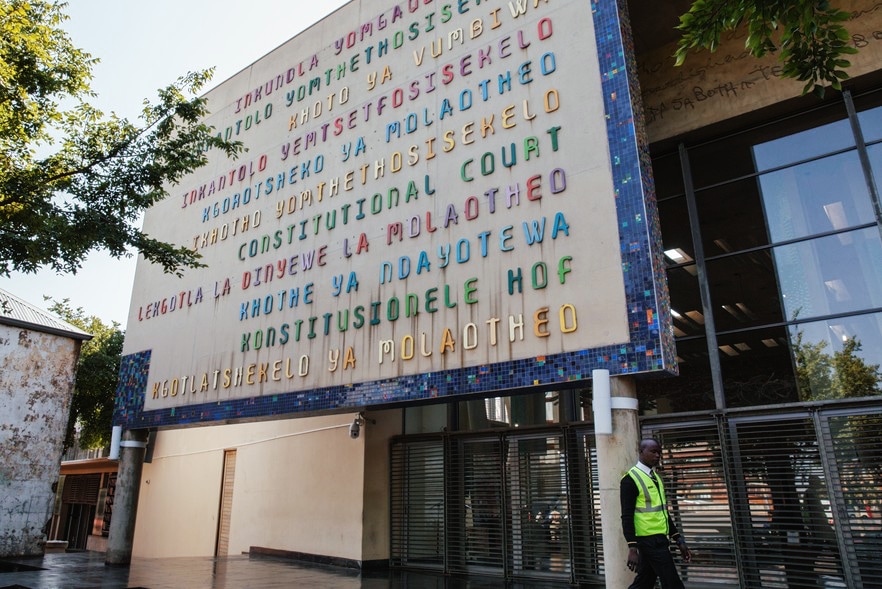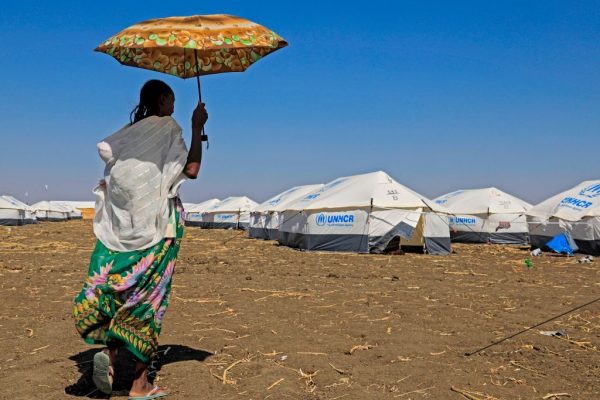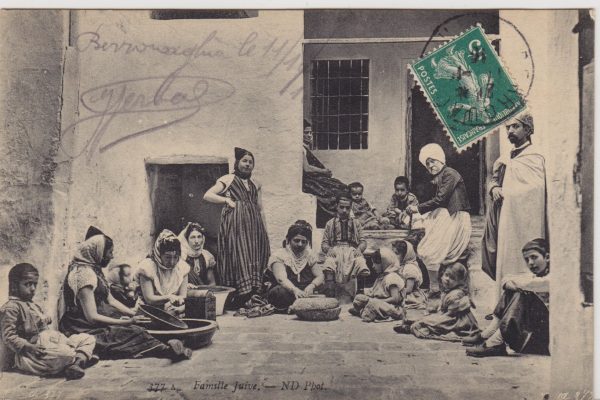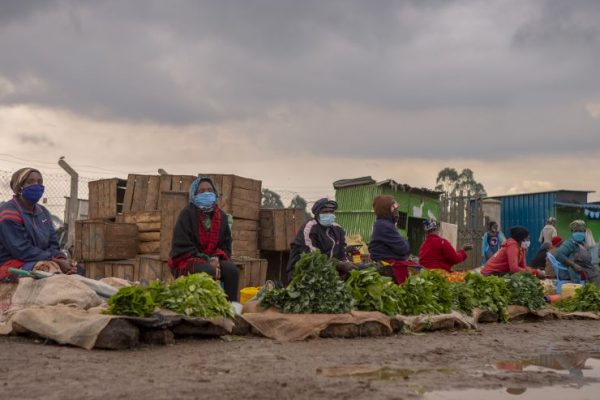Earlier this year, at the University of Michigan Law School, a group of politicians and legal scholars from South Africa, the United States, and Canada gathered to consider the latest step in South Africa’s transformation from pariah state to progressive exemplar: the adoption and implementation of a new permanent constitution. The group included the African National Congress’s Belelani Ngcuka, chair of the Constitutional Implementation Committee; Roelf Meyer, the National Party’s chief constitutional negotiator; and Leon Wessels, deputy chairperson of the Constitutional Assembly. The conference provided an opportunity for a mid-journey moment of self-reflection for the founders of South Africa’s new legal system as well as an assessment of the constitution’s international significance. Margaret Burnham participated in the conference; the article that follows is based on her presentation there.
Present day constitution-making is a shared international effort. Strategies for how best to reduce complex notions of individual freedom and governance to legally enforceable declarative statements (for example, the assertion in the South African Bill of Rights that everyone has the “right to privacy”) are freely passed around from country to country. As these concepts criss-cross national lines, what emerges is a roving constitutional project, in which each new constitution, while reflecting indigenous realities, echoes the terms of other recent national charters: How should a state reconcile the claim for group cultural rights with the equality principle? India faced that challenge. Should a constitution extend protection for individual rights as against non-state actors? Germany adopted an interesting solution.
But constitutions are not merely texts, embodying concepts, principles, and ideals. They are living documents, and their life depends in no small part on the institutions responsible for interpreting them. In South Africa, that interpretive responsibility falls principally to a new Constitutional Court. And its emerging practice—its attention to politics and principle—may suggest important lessons for other democracies wrestling with the proper role of constitutional courts in a democracy.
Constitutional Politics
South Africa recently completed its two-year constitution-making project by distributing millions of copies, in 11 languages, of the final document—the Constitution of the Republic of South Africa, 1996, which became the law of the land this past January. The political negotiations that led to its adoption were perhaps as important, certainly as perilous, as those that resulted in the 1994 elections. Cyril Ramaphosa of the African National Congress (ANC), who was chair of the Constitutional Assembly that began its work in the wake of the elections, says that the final product was drafted by 40 million people; that seems an apt description of the process. To cite just one example: When the National Party (NP) insisted that the Bill of Rights include a “right to lockout” provision, the trade union movement threatened to strike. Ramaphosa was addressing trade union rallies on the lockout clause one moment, and the next fiddling with the constitutional language to eke out a compromise. In the end, if the “right to lockout” and other contentious provisions–among them the protection of private property and the right to maintain same-language (in effect, Afrikaner) schools–had not been resolved, they would have been decided by national referendum. Compromise seemed the better course for all parties: for the NP, a referendum would have meant losing on most of its issues; for the ANC, a referendum would have appeared to signal failure for its Government of National Unity.
The mutual dependence of the political parties dictated constitutional compromise. The question now is whether those concessions will hobble the ANC’s political imperative of redistributive justice. For example, land reform is essential to meet the pressing needs of the ANC’s constituency. However, the constitution raises more questions than it answers about how to ensure equitable land redistribution. It provides that land should be restored to those who lost their property to apartheid’s laws after 1913, but requires, too, that the government compensate landowners whose property is to be expropriated. Because the choice of 1913 as the cutoff year was a concession to the opponents of land reform, most farmland is protected from redistribution. Much of the land seized after 1913 is now industrial property, and neither the government nor the pre-1913 owners–who now, theoretically at least, have legal rights to the land–can really afford to compensate the present landholders. Equally problematic, some pre-1913 owners are making claims to land that is now owned by municipalities; recognizing such claims, as the constitution and the land reform bill appear to dictate, would create havoc with such local economies.
In general, the compelling political need to reach agreement on the constitution meant that the framers avoided some hard questions on which consensus could not be achieved. The result is a constitution with open-ended clauses that now need to be filled in. Some of that work was passed on to the Constitutional Court, which must decide matters such as whether abortion is a protected right. Other issues–for example, whether lockouts are permissible–require parliamentary decision. But while Parliament has been exceedingly slow to speak to these constitutional silences, the Constitutional Court has been remarkably aggressive in staking out its role.
A New Court
Convened for its first sitting in February 1995, South Africa’s highest court comprises 11 judges who will sit for a non-renewable 12 year term. Four of the jurists are black and two are women. Although the constitution provides that only eight judges need hear a matter, in practice all eleven judges hear every case that comes before the Court.
The creation of a Constitutional Court vested with the power of judicial review represented a symbolic and pragmatic break with the past. The old South African judiciary–operating within a Westminster-style parliamentary system–was deeply committed to the status quo, and could not be trusted to give full meaning to the provisions of the new constitution. New judicial leadership with broad authority was required if constitutional adjudication was to become an effective partner in the social transformation envisioned by the constitution. The new Constitutional Court reflects the divergent voices of South African society, and appears to be committed to a vision of judicial activism that can fulfill the democratic and human-rights aspirations embodied in the constitution, often in amorphous language. Perhaps anticipating the inevitable public disaffection that will cloud popular support for potentially divisive democratic reforms, the Court has moved quickly to establish its voice among the country’s new political structures and engender public support for its role.
The high court jurists were all keenly familiar with the positions of the constitution’s framers–indeed, several members of the Court served on the ANC’s constitutional committee and were leading architects of that document. Most of the jurists (including, prominently, the black former civil rights lawyer Pius Langa and the ANC revolutionary hero Albie Sachs) made their views on controversial constitutional issues known to the international community during the lengthy drafting period in writings and speeches.
In part because of this background, members of the Court seem aware of both the challenge of securing a firm and reliable juridical foundation for the new constitution, and of the exigencies of radical social change. Material needs are clamoring to be met; inequities require address; and a history of state violence must be confronted. Although it is only a little over two years old, the Court has not hesitated to take on hard cases–those cases for which no clearly right answer emerges either from precedent or from the constitutional text–like the death penalty (the Court banned it), single-language state-supported schools (also banned), and amnesty for past human-rights violators (upheld). Hard cases challenge the enduring myth that constitutional adjudication is, or should be, devoid of politics. They present problems of interpretation that necessarily involve policy choices that take jurists into uncharted and uncomfortable territory. The decision-making process in these cases disrobes the neutral, objective, and disinterested jurist, and reveals a political being with particular assumptions, biases, aspirations, and commitments. The line between policy and law can be all the more difficult to establish if, as in the South African case, those who are deciding what the Bill of Rights requires in a given case are the same people who advocated for a particular policy during the drafting period–for example, that the right to “bodily integrity” protects abortion.
The Court, perhaps appreciating the interpretive challenges confronting the framer/judges, seems to have adopted methods of interpretation that acknowledge both the choices presented by political imperatives and the need for neutral principles. More particularly, three interpretive anchors emerge from the 40-odd cases the Court has decided during the last two years: the Court has looked to foreign sources to support its decisions; it has contextualized its decisions by discussing the political impulses that gave rise to the constitution; and it has applied the principle of “transparency” to its work, seeking thereby to spotlight its choices rather than hide them behind a veil of supposed neutrality. If successful, this approach holds great promise for other constitutional democracies seeking to reconcile the inherent indeterminacy of rights with the strong desire for concrete, certain, and lasting principles.
Cosmopolitanism
The Court has taken every opportunity to situate its opinions within an international human-rights project. In virtually every decision, it has looked to international and foreign law precedents. The Constitution itself instructs the Court to have regard for international human-rights law. Unlike appellate courts in the United States, the South African jurists are eager to look outside their jurisdictions for comparable or contrasting experiences of other states. They see themselves as internationalists who can gain from–and in turn reinforce–the entrenchment of such international norms and the emergence of a comparative constitutional law. In one recent case, the Court was called upon to decide whether the Bill of Rights’ guarantees of education protected state-supported single-language schools. During the drafting period the Afrikaner community had lobbied hard to preserve such schools, but the textual guarantees of equal educational and cultural rights were intentionally left open-ended in the final document. In arguing the case, the Afrikaners asserted that the cultural integrity of their community was tied to the right to exclude non-Afrikaans speakers from such schools; this argument supposedly implicated broader equality principles to which the Afrikaners (kin, here, to the white male victims of affirmative action) looked for support. The Court rejected the argument, relying on international law principles according to which states are not required to act affirmatively to protect minority groups that have not been victims of past discrimination. Politically, this result seemed right, as it would have been unseemly for the first blow for equal education in South Africa to have been struck on behalf of the Afrikaners, especially given the apartheid-era history of forcing all South African students to learn Afrikaans. Though the decision lacked South African precedent, the Court found ample guidance in international law and practice to bolster its conclusion.
At times the Court has distinguished itself by rejecting prevailing authority in favor of its own vision of justice. In one of its early and most important decisions, the Court declared the death penalty unlawful, thereby remitting the sentences of 400 death-row convicts. This decision bucked public opinion, which strongly favored capital punishment even though the ANC had long opposed it. The Court’s canvass of international and foreign law made clear that it could have gone either way without violating conventional wisdom. But at some risk to its own prestige, the Court opened a new road in the global abolition campaign by adopting US Supreme Court Justice William Brennan’s dissenting view, expressed in Furman v. Georgia, that death is an unconstitutional penalty because it treats “members of the human race as nonhumans, as objects to be toyed with and discarded.” The Court also cited with favor opinions in Massachusetts and California courts striking down capital punishment.
Thus has South Africa, once the subject of sanction and scorn by the international human rights community, begun to demonstrate the transformative potential of human rights norms for domestic law. It has staked out a leadership role in the international human rights community by defining its individual legal persona in reference to that community.
Rights and Policy
In its opinions, South Africa’s Constitutional Court has described its legal work as of a piece with the country’s social and political transformation. To be sure, one purpose of a constitution is to distinguish legal rights from public policy, and ensure that policy is governed by right. But a clear line between rights and policy cannot always be constructed, and the Court refuses to pretend otherwise. It has not eschewed making value-laden, political choices, or sought to present its choices as legally mandatory decisions. For example, in ruling against a victim of police torture who sought punitive damages, the Court wrote that it was “inappropriate to use scarce resources” to pay such damages when such resources could be “better employed in structural and systemic ways to eliminate [the causes of police violence].”
The Court is self-reflective in defining its own role in promoting a “new culture of respect for human rights.” This role-consciousness led the Court to conclude, in the death penalty case, that the state had to be seen as rejecting the idea of violence as legitimate retribution. In one of the most difficult cases to emerge thus far–a challenge brought by Steve Biko’s relatives to the amnesty provisions of the Truth and Reconciliation Bill–the Court described at length the peril and fragility of the political moment, and the need for creative approaches to governance during the transition. The challenged provisions had been central to the negotiations that led to elections and a new constitution; therefore, the Court concluded, it was constitutional. The Court thus openly embraced the “grand project” of political transformation, which, it wrote, “could not be achieved without a firm and generous commitment to reconciliation and national unity.” In other cases the Court has made clear its appreciation for the class bias embedded in law, and spoken of the need to revamp legal structures that perpetuate inequity. It has sought to look beneath the appearance of equality in a piece of legislation to determine what its actual impact will be upon disadvantaged groups. For example, it struck down a law permitting civil law debtors to be imprisoned for failure to pay. The Court observed that while it appeared to affect all debtors equally, the law was unconstitutionally discriminatory because wealthier debtors with access to the system could avoid its impact by declaring bankruptcy.
Transparency
Finally, the Court has emphasized the importance of judicial “transparency.” The Court has advanced a particular vision of South Africa’s political transformation, and not shied from describing that vision. Its opinions acknowledge that it is making political choices, and highlight the reasons for those choices. In the case concerning same-language schools, the justices were torn between protection for cultural minorities and the need for educational equity. Again, this was a “hard case,” generating deep public division and difficult interpretive choices: the case called for a decision between two equally plausible legal results. The Court discussed the bitter history of educational segregation and apartheid-era laws requiring African schools to instruct in Afrikaans. To accord the Afrikaner minority a constitutionally-guaranteed right, the Court held, would merely perpetuate the inequities of the past. It thus established that the right of cultural minorities to affirmative protection could not spring from thin air, but rather had to be tied to past discrimination.
New Questions
The South African constitution-making process illustrates a refreshing jurisprudence, at once principled and pragmatic. Norms–both international and domestic–are acknowledged and respected, but so is political context. The Court speaks directly and clearly to its constituents within the legal system and beyond it; its opinions are long, discursive, and argumentative. In two short years, the Court has addressed many of the theoretical and ideological debates in the international legal discourse. It remains to be seen if the Court will continue to apply the teachings of international human-rights law once its indigenous constitutional law is more firmly established. If it does, we may begin to see a particularly compelling synthesis of universal human-rights norms and local jurisprudence. It is likewise an open question whether the Court’s vigorous and open commitment to a progressive constitutionalism will alienate it from those segments of the South African population that have already begun to pull away from the Government of National Unity. Such alienation, should it come to pass, would likely imperil South Africa’s fragile peace.
Like the country, the Court stands on the “bridge to the future” that it described in the Biko amnesty case, traversing in giant but careful steps. Safe journey.
Originally published in the December 1997/ January 1998 issue of Boston Review
Independent and nonprofit, Boston Review relies on reader funding. To support work like this, please donate or become a member.








